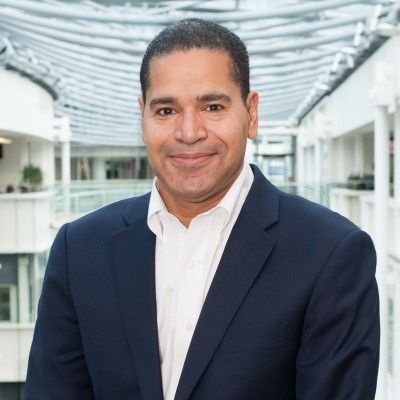Study Champions Rukobia For Some AIDS Patients
ViiV Healthcare reports long-term positive results for its drug, Rukobia (fostemsavir).
Antiretroviral (ARV) medicines have significantly decreased mortality over the past 30 years, but treatment failure remains a concern, especially for heavily treatment-experienced people living with multidrug resistant HIV.
ViiV Healthcare has publicized positive long-term results from its phase 3 BRIGHTE study of its drug, Rukobia (fostemsavir), that may seed hope that those treatment failures can be overcome.
Max Lataillade

The results showed that people living with multidrug resistant HIV-1 who are "heavily treatment experienced" and treated for approximately five years with fostemsavir-based regimens, experienced durable virologic responses and continued clinically meaningful improvements in CD4+ cell count and CD4+/CD8+ ratio, according to Max Lataillade, vice president head of global early development and research strategy at ViiV Healthcare.
Importantly, BRIGHTE study participants continued to show clinically meaningful improvements in CD4+ cell count and CD4+/CD8+ ratio, which is crucial for immune recovery, according to ViiV.
The study involved 371 people living with multidrug resistant HIV who are heavily treatment-experienced and have few treatment options left due to the significant complexities of resistance, safety, tolerability, contraindications and prior treatment failure.
“All trial participants were required to have a viral load ≥400 copies/mL and ≤2 classes of ARV (antiretroviral) medications remaining at baseline,” said Andrew Clark, global medical lead at ViiV Healthcare. “Trial participants were enrolled in either a randomized or non-randomized cohort.”
Within the randomized cohort, participants had one, but no more than two, fully active and available ARV agent(s) at screening, which could be combined as part of an efficacious background regimen. Randomized participants received either fostemsavir 600mg twice daily or placebo in addition to their current failing regimen for eight days of functional monotherapy. Beyond Day 8, randomized participants received open-label fostemsavir 600mg twice daily plus an optimized background therapy.
Within the nonrandomized cohort, participants had no fully active and licensed antiretroviral agent(s) available at screening, Clark explained. Nonrandomized participants were treated with open label fostemsavir 600mg twice daily plus optimized background therapy from Day 1 onward. The use of an investigational drug as a component of the optimized background therapy was permitted in the nonrandomized cohort.
Overall BRIGHTE study participants had very advanced HIV; 75% had a CD4 count <200 and 86% had a prior history of AIDS.
Lataillade noted that there are people living with multidrug resistant HIV who are often unable to benefit from newer therapies in existing classes due to complex resistance profiles. As a result, they can run out of treatment options.
“In addition, most people living with MDR (multidrug resistant) HIV also have a poor immune system response to HIV despite ART,” he said. “What this data shows is that this specific patient population can take fostemsavir as part of their antiretroviral regimen and still experience a durable and favorable virologic response after a five-year period.”
Importantly, BRIGHTE study participants continued to show clinically meaningful improvements in CD4+ cell count and CD4+/CD8+ ratio, which is crucial for immune recovery.
FDA Accepts NDA for Gilead's New HIV Prevention Shot
February 18th 2025Lenacapavir is a twice-yearly injectable medication designed to be used as pre-exposure prophylaxis (PrEP). The FDA is giving this drug a priority review and expects to make a decision by June 19, 2025, according to a release.
Read More